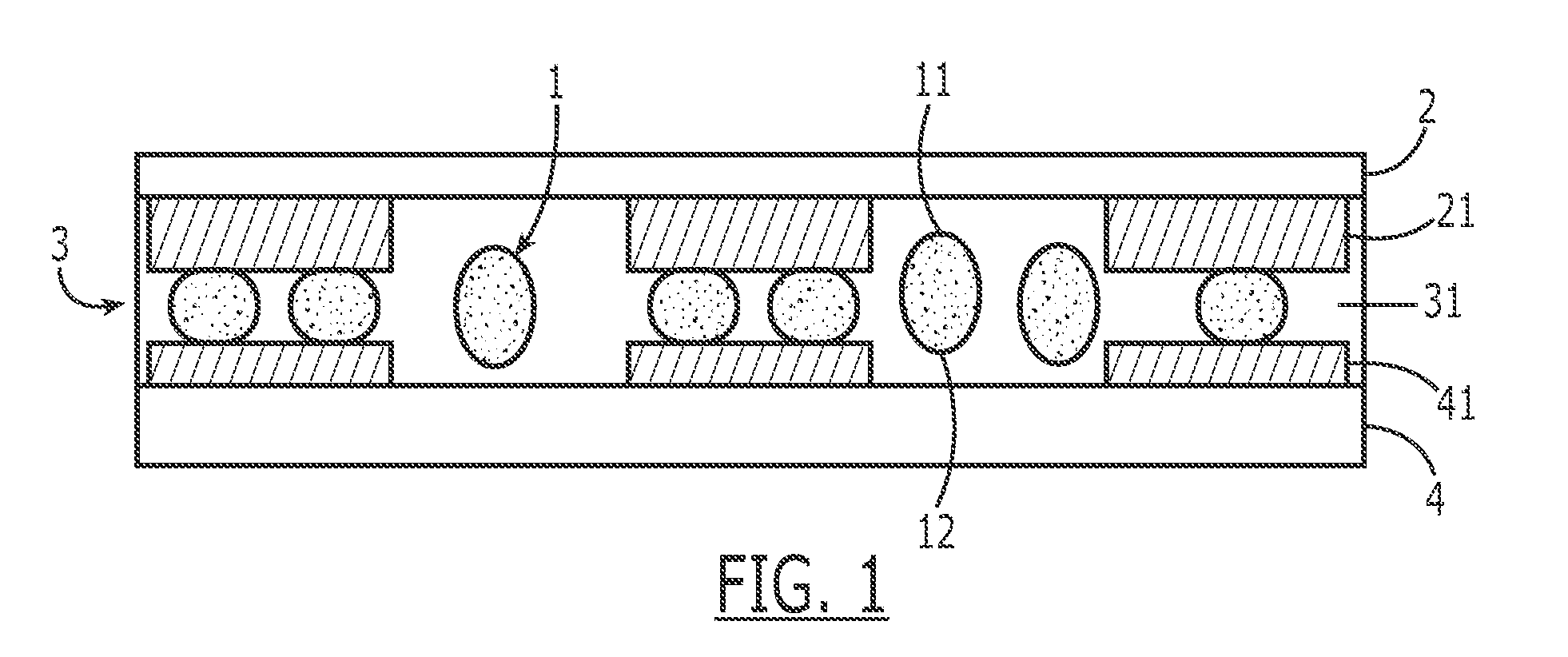Polymer Particles, Conductive Particles, and an Anisotropic Conductive Packaging Materials Containing the Same
a technology of anisotropic conductive packaging and conductive particles, which is applied in the direction of non-conductive materials with dispersed conductive materials, synthetic resin layered products, natural mineral layered products, etc., can solve the problems of poor dispersibility of adhesive resin, insufficient contact of conductive particles with electrodes, and insufficient adhesive force of curing binder resin, etc., to achieve superior electrical connection, increase contact area, and uniform gap size
- Summary
- Abstract
- Description
- Claims
- Application Information
AI Technical Summary
Benefits of technology
Problems solved by technology
Method used
Image
Examples
example 1
[0063] (1) Preparation of Seed Particles
[0064] 30 parts by weight of a styrene monomer, 6 parts by weight of 2,2′-azobis(2,4-dimethylvaleronitrile) as an initiator, 18.7 parts by weight of polyvinylpyrrolidone (molecular weight: 40,000), and 190 parts by weight of methanol and 15 parts by weight of ultrapure water as reaction media are mixed together, quantified, and added to a reactor. Thereafter, the reaction mixture is subjected to polymerization under a nitrogen atmosphere at 70° C. for 24 hours to prepare polystyrene seed particles. The seed particles are washed with ultrapure water and methanol several times, and dried in a vacuum freeze dryer to obtain a powder. The seed particles are measured to have an average particle diameter of 1.15 μm, a CV value of 4.1%, and a molecular weight of 15,500.
[0065] (2) Preparation and Evaluation of Polymer Resin-based Particles
[0066] 2 parts by weight of the seed particles are homogeneously dispersed in 450 parts by weight of an aqueous ...
example 2
[0073] Polymer particles and conductive particles are prepared in the same manner as in Example 1, except that a monomer mixture consisting of 80 parts by weight of styrene and 20 parts by weight of 1,4-butanediol diacrylate is used instead of the monomer mixture consisting of 90 parts by weight of styrene and 10 parts by weight of divinylbenzene. A connection structure is manufactured using the conductive particles. The properties of the base polymer particles and the connection structure are evaluated according to the same procedure as in Example 1. The results are shown in Table 1.
example 3
[0074] Polymer particles and conductive particles are prepared in the same manner as in Example 1, except that a monomer mixture consisting of 80 parts by weight of styrene and 20 parts by weight of 1,6-hexanediol dimethacrylate is used instead of the monomer mixture consisting of 90 parts by weight of styrene and 10 parts by weight of divinylbenzene. A connection structure is manufactured using the conductive particles. The properties of the base polymer particles and the connection structure are evaluated according to the same procedure as in Example 1. The results are shown in Table 1.
PUM
| Property | Measurement | Unit |
|---|---|---|
| compressive rupture deformation | aaaaa | aaaaa |
| particle diameter | aaaaa | aaaaa |
| aspect ratio | aaaaa | aaaaa |
Abstract
Description
Claims
Application Information
 Login to View More
Login to View More - R&D
- Intellectual Property
- Life Sciences
- Materials
- Tech Scout
- Unparalleled Data Quality
- Higher Quality Content
- 60% Fewer Hallucinations
Browse by: Latest US Patents, China's latest patents, Technical Efficacy Thesaurus, Application Domain, Technology Topic, Popular Technical Reports.
© 2025 PatSnap. All rights reserved.Legal|Privacy policy|Modern Slavery Act Transparency Statement|Sitemap|About US| Contact US: help@patsnap.com


